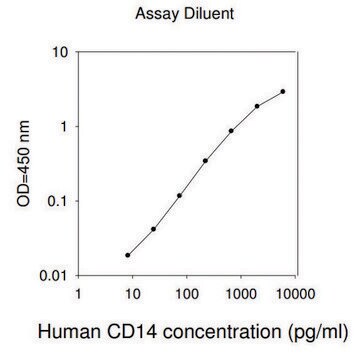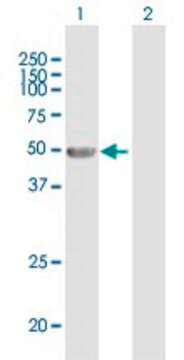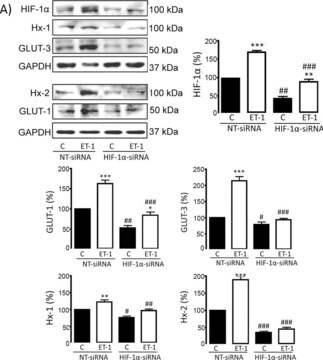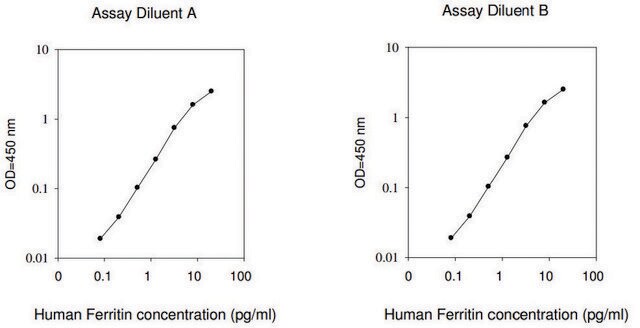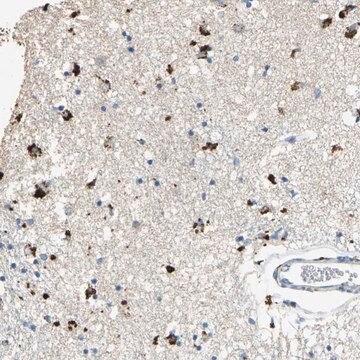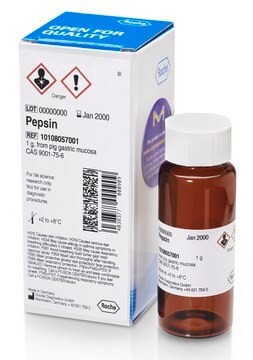General description
ANGPTL4 (angiopoietin-like protein 4, hepatic fibrinogen/angiopoietin-related protein (HFARP), fasting-induced adipose factor (FIAF), PPARγ angiopoietin-related protein (PGAR)) is a secreted protein selectively expressed in adipose tissue, liver, and placent, that plays a variety of roles in vivo, ranging from adipogenesis to angiogenesis to carcinogenesis. Several transcription factors exert influence on ANGPTL4 transcription, including PPARα, PPARγ, and HIF 1α. PPARα and HIF 1α synergistically cause the activation of ANGPTL4 in cardiomyocytes; induction of ANGPTL4 in the heart inhibits lipoprotein-derived fatty acid delivery. As a transcriptional target of PPARγ, ANGPTL4 has been hypothesized to play a role in adipogenesis, insulin sensitivity, and energy metabolism. The expression of ANGPTL4 is also under nutritional and hormonal control. During fasting conditions, transcription of ANGPTL4 in both liver and adipose tissue is induced independently of PPARα1 While circulating levels of ANGPTL4 are increased in genetically obese mice, rodents fed a highfat diet demonstrate reduced circulating ANGPTL4 levels, suggesting that ANGPTL4 may be involved in response to the availability of nutrients. In endothelial cells, ANGPTL4 mRNA and protein levels increase in response to hypoxia. ANGPTL4 has been observed to induce a strong pro-angiogenic response independent of vascular endothelial growth factor (VEGF), and its expression has been described in hypoxic human tissues as well as a variety of cancers, including liposarcoma, hepatocellular carcinoma, and conventional renal cell carcinoma. Taken together, these findings suggest that ANGPTL4 may be involved in the mechanisms that compensate for ischemia by angiogenesis.
Specificity
Positive controls: HepG2 and NGP96 cell lysates, mouse placenta and rat liver homogenates, serum-stimulated mouse 3T3-L1 embryo fibroblast lysates, and 2 week-old mouse brain homogenates
Recognizes ANGPTL4 (MID).
Immunogen
Synthetic peptide derived from an internal region of the human ANGTPL4 protein, which differs from rat and mouse by one and two conservative amino acid replacements, respectively.
Application
Anti-ANGPTL4 (MID) Antibody is an antibody against ANGPTL4 (MID) for use in WB.
Research Category
Signaling
Research Sub Category
Growth Factors & Receptors
Western Blotting: 1-3 μg/mL
Physical form
400 μL aliquot at a concentration of 0.25 mg/mL in phosphate buffered saline (pH 7.4) containing 0.1% sodium azide.
Format: Purified
ImmunoAffinity Purified
Storage and Stability
Maintain at -20°C in undiluted aliquots for up to 12 months. Avoid repeated freeze/thaw cycles.
Legal Information
CHEMICON is a registered trademark of Merck KGaA, Darmstadt, Germany
Disclaimer
Unless otherwise stated in our catalog or other company documentation accompanying the product(s), our products are intended for research use only and are not to be used for any other purpose, which includes but is not limited to, unauthorized commercial uses, in vitro diagnostic uses, ex vivo or in vivo therapeutic uses or any type of consumption or application to humans or animals.
